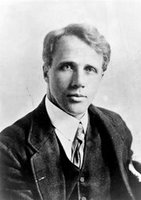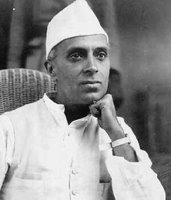
The phone call from
Rashmi Sharma (
Bachhi as I dearly call her) brought my memories of
Haridwar and
Rishikesh.
Bachhi was a
colleague in C-
DAC and has been very close to family as a sister relation. Her career path took her to Siemens and then to Oracle.
Bachhi hails from
Rishikesh, one of the pious and religious places in the north of India in the state of
Uttaranchal. Both
Haridwar and
Rishikesh are on the banks of River
Ganga. Surrounded by hills and bisected by the wide and sluggish Ganges,
Rishikesh is claimed as the `Yoga Capital of the World'. It is an excellent place to meditate and study yoga.
http://en.wikipedia.org/wiki/Rishikesh and
http://en.wikipedia.org/wiki/Haridwar give information about them.
For the past three years for some or other occasion or work or as a tourist I had been visiting Haridwar and Rishikesh in the months of December and January. I remember the bath in the Ganges. There is something special about it. It is beyond the words to express. First in the morning cold in the open air, it is very difficult even to go near the cold water (sometimes sub-zero). But then one goes with the spirit and the soul calling. Once you are inside the water, the coldness vanishes and many dips after that becomes a ritual. The cold water really rejuvenates the body and the feeling of lightness stays for weeks. As it is said in the Hindu religious texts, the Mother Ganga takes away and washes the sins with her purified water, makes you pure.
I am not sure whether the sins are washed away or not, but my knees and legs get a different feelings sure. The body gets a different touch which stays for weeks together. Every year I look forward for a chance to go and take another bath, but may be every year it does not become possible.
Mythology and texts of religion has several stories to depict the birth of Godden Ganga as a river. One which I remember goes as follows :- A king Sagar, ancestor of Lord Rama, performed a Aushwamedha Yagna. This ceremony consisted in sending a horse round the Indian world, with defiance to all the earth to arrest its progress. If the horse returned unopposed , it was understood to be acquiescence in the supremacy of the king, and the horse was then solemnly sacrificed to the gods. When King Sagar made preparations for the 100th sacrifice, Indra, King of Heaven, who had himself performed the ceremony a 100 times, jealous of being displaced by this new rival, stole the horse, and concealed it in a subterranean cell, where the sage Kapila, or Kapila Muni, was absorbed in meditation, dead to all occurrences of the external world.
The sixty thousand sons of Sagar traced the horse to its hiding place, and believing the sage to be the author of the theft assaulted him. The holy man being thus roused opened his eyes and cursed the assailants, who were immediately burnt to ashes and sentenced to hell.
After three genrations, Bhagiratha, who after severe austerities, propitiated the Goddess Ganga , and she agreed to come down to earth to rescue the sons of Sagar from the ashes.
However, the impact of her fall would be so severe, that it could be borne by none less than Lord Shiva himself. Therefore Bhagiratha went into meditation again and obtained Shiva's consent after many more austerities. Finally, the river came down and fell into Lord Shiva's matted hair, (this manifestation of Lord Shiva is known as Gangadhara), from where she separated into seven streams, of which three flowed to the west and three to the west. The seventh stream followed Bhagirath to earth and then to the rest of the India.
Bhagirath patiently led the river down to the sea from the Himalayas and for this reason the Ganges is also known as the Bhagirathi.

The story is interesting; and many a times standing on the bank of the river in moonlight - I used to wonder, this is the same water that has given life to the Sons of Sagar, the same water which is the blood stream of India. The civilization has started with these waters. Many cultures have been cultivated on its banks and water, many wars have been fought, many politics has been played and India has flourished. But the serenity, the calmness and the pious feeling of the water remains unchanged, remains there from time immemorial.
--- I will for another bath in the Ganges in the cold water- to rejuvenate myself again.....
 Can the open source movement adapt to include a sustainable commercial products? - -that is an old question perhaps and have been asked on severa occassions since the Open Source started. Well, I think eventually it will, but not yet. Yes, that was pretty vague. But you have to look at the big picture here. At some point, I believe that Open Source and closed source software will have to learn to work together as the lines between the two continue to blur.
Can the open source movement adapt to include a sustainable commercial products? - -that is an old question perhaps and have been asked on severa occassions since the Open Source started. Well, I think eventually it will, but not yet. Yes, that was pretty vague. But you have to look at the big picture here. At some point, I believe that Open Source and closed source software will have to learn to work together as the lines between the two continue to blur. customize for their exact needs. With the rise of packaged software, that trend waned in the 80s and 90s, but it has now re-emerged with the rise of Linux and the internet. These days, a broad range of open-source infrastructure software, tools, and applications is available.It's interesting to compare the commercial software space with that of open source. Distros add packages all the time, and it's seen as a positive thing. The current trend is for companies to give their closed source products to the open source world to be bundled with distros, the complete opposite of the Apple situation, so obviously there's a different dynamic in open source.
customize for their exact needs. With the rise of packaged software, that trend waned in the 80s and 90s, but it has now re-emerged with the rise of Linux and the internet. These days, a broad range of open-source infrastructure software, tools, and applications is available.It's interesting to compare the commercial software space with that of open source. Distros add packages all the time, and it's seen as a positive thing. The current trend is for companies to give their closed source products to the open source world to be bundled with distros, the complete opposite of the Apple situation, so obviously there's a different dynamic in open source. http://www.opensource.org/history.html
http://www.opensource.org/history.html




 There is a huge gathering here and I am writing this blog sitting through one of the sessions - a
There is a huge gathering here and I am writing this blog sitting through one of the sessions - a 


